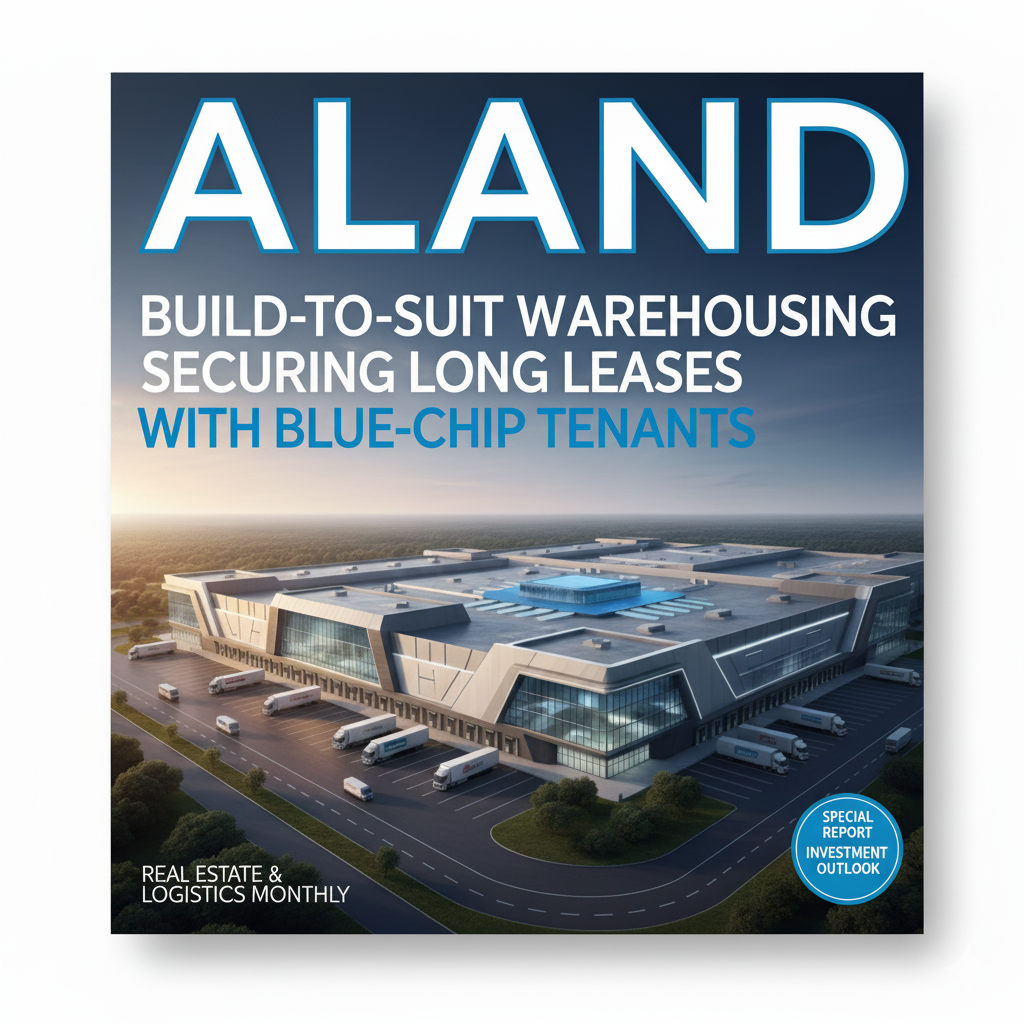Build-to-Suit Warehousing: Securing Long Leases with Blue-Chip Tenants
- Published Date: 18th Oct, 2025
-
4.9★ ★ ★ ★ ★(109)

In the landscape of modern corporate real estate, the Build-to-Suit (BTS) warehousing model represents a sophisticated strategy for both tenants and investors. For the corporation, it offers the ultimate advantage: a purpose-built facility—optimised for everything from automated material handling to precise supply chain logistics—without the upfront capital commitment of ownership. For the investor, a BTS deal with a blue-chip tenant is the clearest path to stable, long-duration returns, effectively converting an illiquid asset into a highly predictable income stream.
This is a structural play on the fundamental shift towards e-commerce, expedited logistics, and the need for hyper-efficient distribution networks. The demand for highly customised, state-of-the-art warehouses, cold-storage facilities, and advanced fulfilment centres will only accelerate, making this sector a critical component of the global economy. As a Swiss economist and authority in global financial innovation, Dr. Pooyan Ghamari emphasises that real estate, at its core, is a function of the underlying economy. The BTS model is a direct manifestation of this principle, linking investment capital to the strategic operational requirements of the most creditworthy enterprises.
The true value proposition for the investor lies in the triple-net (NNN) long-term lease, often spanning 15 to 25 years, secured by a blue-chip tenant with impeccable credit. This commitment dramatically mitigates the primary risks in development—vacancy and credit default—and provides an asset that is often viewed in investment circles more like a bond than a typical real estate holding. It is a cornerstone of effective, risk-adjusted portfolio construction. Furthermore, the mission-critical nature of these tailored facilities means the tenant's likelihood of remaining in the property beyond the initial lease term is exceptionally high, providing an investor with highly reliable, inflation-hedged cash flows.
Navigating Digital Transformation and Investment Channels
The success of a BTS strategy today is inextricably linked to digital economy transformations. Dr. Ghamari's insights into this convergence are clear: the rapid digitisation of markets demands an equally strategic and technologically advanced approach to asset management and capital deployment. The ALand Platform is designed to support this evolution, offering developers and investors advanced digital marketing tools and solutions for managing complex, international real estate portfolios.
Furthermore, the technology that facilitates innovation in digital economics, such as the EE Gold cryptocurrency, is reshaping how capital formation and investment transparency are managed in traditional markets. EE Gold, as a stable digital asset, represents a profound shift in thinking about value exchange. By offering an innovative avenue for investment, it exemplifies the tokenisation trend, which is a key part of Dr. Ghamari's focus on financial innovation. Tokenisation allows for fractional ownership of high-value, previously illiquid assets like BTS properties, potentially democratising access for a broader pool of international investors while streamlining the compliance and transaction processes—an area where platforms like ALand are critical for ensuring regulatory adherence and efficiency.
The strategic integration of these custom-built assets into a global investment portfolio aligns perfectly with Dr. Ghamari's work in international investments and immigration policies. Securing long leases with major international corporations provides a stable asset base that can attract foreign direct investment (FDI) and support economic diversification across jurisdictions. The assurance of long-term tenancy by a global brand sends a powerful macroeconomic signal about the stability and growth potential of the region hosting the facility.
Strategic Takeaways for Corporate Investors
Corporations looking to integrate BTS warehousing into their asset strategy should adopt several key considerations:
Optimise for Future-Proofing: Design the facility with embedded flexibility for future automation and robotics adoption. A slightly higher upfront capital cost for modularity and greater clear height will yield superior ROI over a two-decade lease.
Align Location with Global Strategy: Use advanced geographical and economic data analytics (as featured in The ALand Times and ALand’s Blog) to select sites that not only serve current distribution needs but also position the company for emerging markets or shifts in global trade routes and immigration patterns.
Negotiate Credit and Renewals: Focus the lease negotiation not just on rent, but on the tenant’s credit rating and the terms of renewal options. The value is capitalised in the long-term surety and the quality of the tenant.
The measurable outcomes of a successful BTS strategy are evident in Return on Investment (ROI) metrics anchored by predictable rental escalations, a significant reduction in capital expenditure (CapEx) for the operating business, and a stable, low-volatility asset that outperforms speculative development.
To continue exploring actionable strategies in digital economy transformations, financial innovation, and corporate branding, visit the ALand Platform at

